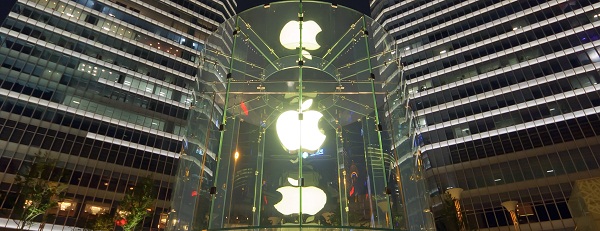How far Apple has come to reach $500

I don't own any stock (for conflict-of-interest reasons), but it's hard to ignore Apple pushing above $500 a share today. By three dollars and eighty-three cents. In midday trading shares are still a respectable $499.79. Apple opened at $499.74 today from Friday's close of $493.42.
The Cupertino, Calif.-based company has come a long ways to reach this point.
When Steve Jobs returned to Apple in late 1996, the company was months from bankruptcy. But after assuming role of interim CEO, he pruned product lines and introduced the Bondi Blue iMac (in summer 1998), which led to a stunning revival in the brand and sales -- and to Apple's share price. Then disaster struck in the form of the trendy, translucent and tidily high-priced G4 Cube. The Mac sold poorly, in part because of the price but also because of timing. Recession suddenly and unexpectedly stalled global PC sales in autumn 2000, leading Apple, Dell and other manufacturers to issue profit warnings -- even Microsoft.
Apple issued its profit warning in late September, and the share price immediately collapsed. Between Aug. 31 and Dec. 31, 2000, Apple shares plunged more than 75 percent. The fruit-logo company had more inventory on store shelves than it could sell. Following a second profit warning, in December 2000, Apple revealed the size of the problem: 11 weeks of Macs in the channel. Normal: four to six weeks.
Shares remained moribund for years. On the eve of Macworld in January 2003, with Apple shares at $14.85, analyst Michael Hillmeyer reinstated Apple coverage with "sell." Hillmeyer wrote in a note to investors: "Although Apple makes great products, in our view the new product pipeline looks skimpy and we expect continued market share losses. A product differentiation strategy is difficult in a business increasingly commoditizing." Oh, the wicked, humbling perspective that hindsight brings.
Apple shares started a slow, steady recovery that lasted until the next recession, which is the last one looking back from today. Shares topped $200 in late December 2007. But the stock market collapse of 2008, which coincidentally came eight years to the day of Apple's earlier share price plunge, hit all tech companies hard. Apple among them; shares closed at $105.26, down $22.98, or 17.92 percent, on Sept. 29, 2008. Apple's market cap plummeted from $158.84 billion on Aug. 15, 2008 to $88.68 billion on Oct. 2, 2008. However, Apple shares started falling ahead of the greater market collapse, closing at $175.74 on Aug. 15, 2008. Between that day and the end of that year, Apple fell nearly 51 percent.
But Apple's stock recovered faster -- and profits grew higher -- than every other tech company. By the end of 2009, shares had climbed more than 132 percent from January 2 to $210.73.
In late May 2010, Apple's market capitalization topped Microsoft's -- $222.12 billion to $219.18 billion. In August 2011, Apple briefly became the world's most valuable company, with valuation rising about Exxon Mobile -- $337.17 billion to $330.77 billion, respectively. Around 1 pm ET today, Apple's market cap was $464.79 billion and Exxon's $398.98 billion.
But Apple's rising stock only tells part of the story. There's performance with it -- something Apple couldn't claim for much of the second Steve Jobs era, when hype lifted shares more. During fiscal first quarter 2012, Apple generated more revenue than all of fiscal 2009 ($46.33 billion to $42.91 billion). During the quarter, iPhone generated nearly as much revenue as all Apple did in fiscal 2007 ($24.42 billion to $24.58 billion).
Photo Credit: Francesco Dazzi/Shutterstock